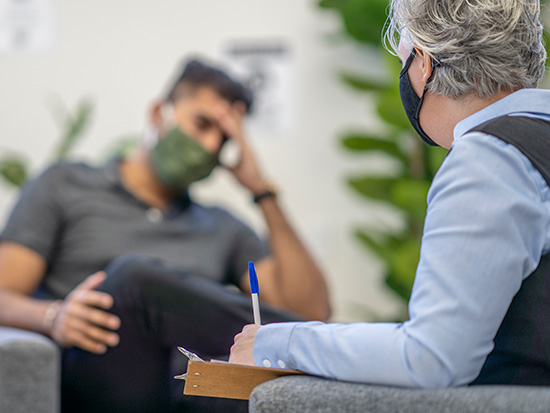 While the mental health of many Americans worsened during the pandemic, a recent UAB study found the increase in depression and anxiety symptoms was greatest within Black, Hispanic and Asian communities.In 2020, the United States saw increases in both hospitalizations and unemployment rates due to the COVID-19 pandemic. With the unknowns of a pandemic lingering, there was also an increase in the number of Americans who experienced depression or anxiety. However, researchers from the University of Alabama at Birmingham show these rates were the most prevalent in the Black, Hispanic and Asian communities.
While the mental health of many Americans worsened during the pandemic, a recent UAB study found the increase in depression and anxiety symptoms was greatest within Black, Hispanic and Asian communities.In 2020, the United States saw increases in both hospitalizations and unemployment rates due to the COVID-19 pandemic. With the unknowns of a pandemic lingering, there was also an increase in the number of Americans who experienced depression or anxiety. However, researchers from the University of Alabama at Birmingham show these rates were the most prevalent in the Black, Hispanic and Asian communities.
Results from the study showed that in the first year of the pandemic, April 2020-April 2021, the prevalence of people with depression or anxiety symptoms in America increased substantially — from about 11 percent of people in 2019 to close to 40 percent.
Mieke Beth Thomeer, Ph.D., associate professor in the College of Arts and Sciences’ Department of Sociology, and Myles Moody, Ph.D., assistant professor in the Department of Sociology, found in their study, Racial and Ethnic Disparities in Mental Health and Mental Health Care During The COVID-19 Pandemic, that the increase was steeper for Black, Hispanic and Asian American people in the United States.
“Comparing 2019 to April-May 2020, probabilities of depression and anxiety were 218 percent larger for white people, 280 percent larger for Black people, 344 percent larger for Hispanic people and 560 percent larger for Asian American people,” Thomeer said. “What this means is that, in the early months of the pandemic, Black and Hispanic people had worse mental health outcomes compared to white people.”
According to Thomeer, there was significance to the timing of spikes in mental health issues for both the Black and Asian American participants.
“We found that Black people in the study were the only racial/ethnic group to experience a larger probability of depression or anxiety in the May 28-June 2, 2020, time period — around the time of the murder of George Floyd,” she said.
 Mieke Beth Thomeer, Ph.D.Researchers also found that Asian American people in the study were the only racial/ethnic group to experience the larger probability in the March 17-29, 2021 period, around the time of the murder of six Asian American women in Atlanta.
Mieke Beth Thomeer, Ph.D.Researchers also found that Asian American people in the study were the only racial/ethnic group to experience the larger probability in the March 17-29, 2021 period, around the time of the murder of six Asian American women in Atlanta.
In addition to the increases, study results showed that, even though these groups experienced the greatest increase in mental health struggles, they demonstrated higher levels of unmet mental health care needs during the pandemic, compared to white participants.
“The COVID-19 pandemic produced and continues to generate devastating consequences globally, including decreases in economic stability, increases in loneliness and social isolation, and deaths of loved ones,” Thomeer said. “It’s important to recognize that these consequences were experienced unevenly, and were especially pronounced for racially and ethnically minoritized people.”
Thomeer hopes the findings of this study can be used to increase awareness of the mental health burden due to the pandemic and improve the affordability and accessibility of services to help the long-term mental health crisis in the United States.